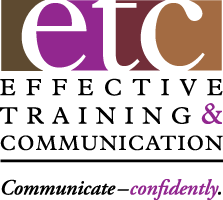It’s time to add some Best-in-Class strategies for handling audience questions to your growing Workplace Presenter’s Tool Kit. What they ask and how you respond can make or break your credibility, impact your confidence and influence your outcomes.
If you thoroughly planned and prepared your presentation, that detailed process should help you anticipate 90% of the questions 90% of the audience will ask 90% of the time. Not bad odds for sure.
To achieve a higher level of audience-centricity, answer as many of those obvious questions as you can during your actual message. Borrowing from military strategists and chess masters here, the best defense is a strong offense. By dealing with anticipated questions – especially the difficult ones – up front, you display confidence and a higher level of audience focus. But what about those questions you didn’t answer up front or anticipate?
Presenters generally use one of two opposite strategies for handling audience questions – asking them to hold questions until the end of the presentation or inviting them anytime. Each has relative advantages and disadvantages for presenters. I’ll discuss both strategies this month and share some alternatives next month.
1. Hold questions until the end
This is clearly an audience management tactic, especially useful for less experienced or confident presenters or when the topic is controversial. The advantages include:
- Limiting interruptions and getting off track.
- Minimizing the probability that your presentation will quickly disintegrate into a confrontation or argument.
- Avoiding dealing with questions that will be answered during the remainder of the presentation and
- Controlling your time.
There are disadvantages, however:
- Questions are a form of feedback about the clarity or focus of the message. Holding them until the end limits your capacity to deal with that feedback and react accordingly.
- People don’t like to be made to wait and some will interrupt you with questions no matter what you ask them to do.
- Most importantly, the audience remembers most what they hear last. No matter how smooth and focused your presentation is – and especially your summary, your Q&A will automatically be less so. It’s almost anticlimactic, especially after a stirring summary.
- And what if no one has a question, or forgot the one they wanted to ask. That painfully long pause between ‘Any questions … ‘ and ‘Thank you.’ can be unnerving.
2. Questions anytime
Here, it’s a presenter image tactic, suggesting that you can handle anything they can throw at you and almost daring them to try. Not something for the rookies or faint of heart. Besides projecting that image of confidence, other advantages include:
- Treating questions as feedback and being able to revise plans in midstream.\
- Being perceived as more audience-friendly and responsive.
- Encouraging more dialogue and audience engagement and less lecturing.
- Helping you evolve from ‘formal speaker’ to ‘conversational facilitator’.
As enticing as these advantages might be, they come with a price tag and these disadvantages:
- Greater likelihood to get off target, especially early on.
- Greater chance of going over time limits.
- Losing control, especially with very vocal, opinionated or discourteous people.
- Encountering questions about Sub-Point C’s content during Sub-Point A.
Choosing which strategy to use is not an easy decision because neither one works best for all presenters, all messages and all audiences. But there are two ways out of this dilemma, two hybrid strategies that involve the best features of both approaches … Interested? Intrigued? Then be sure to read the July issue of ‘Communicate Confidently!’ to learn all about these options.
